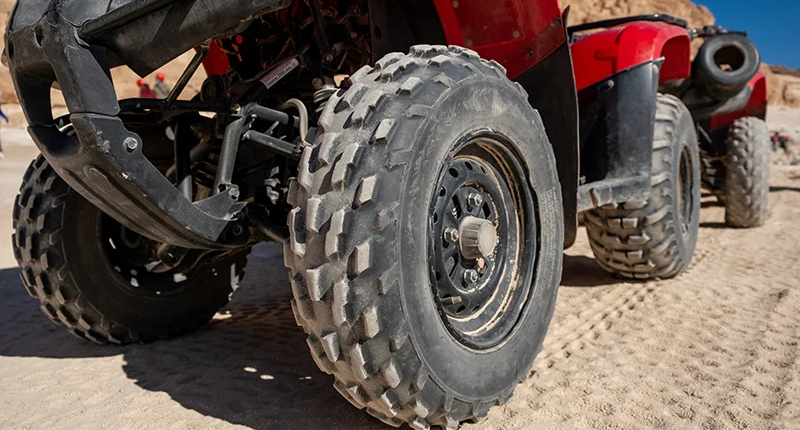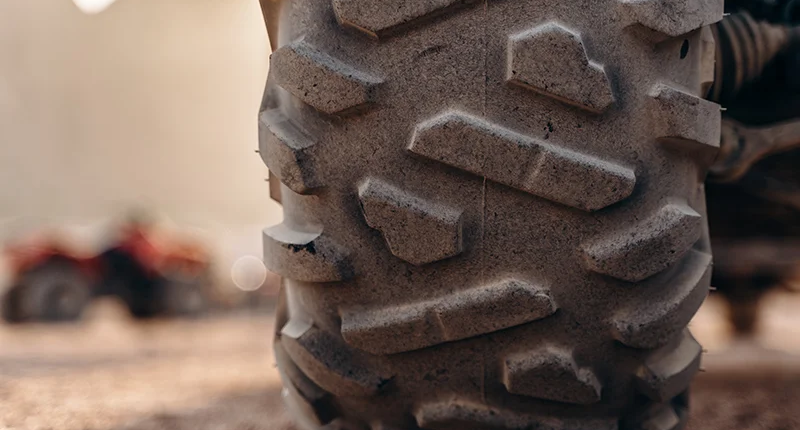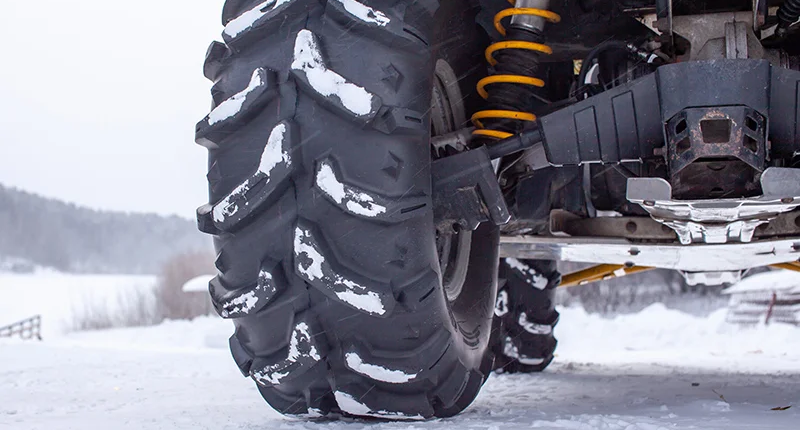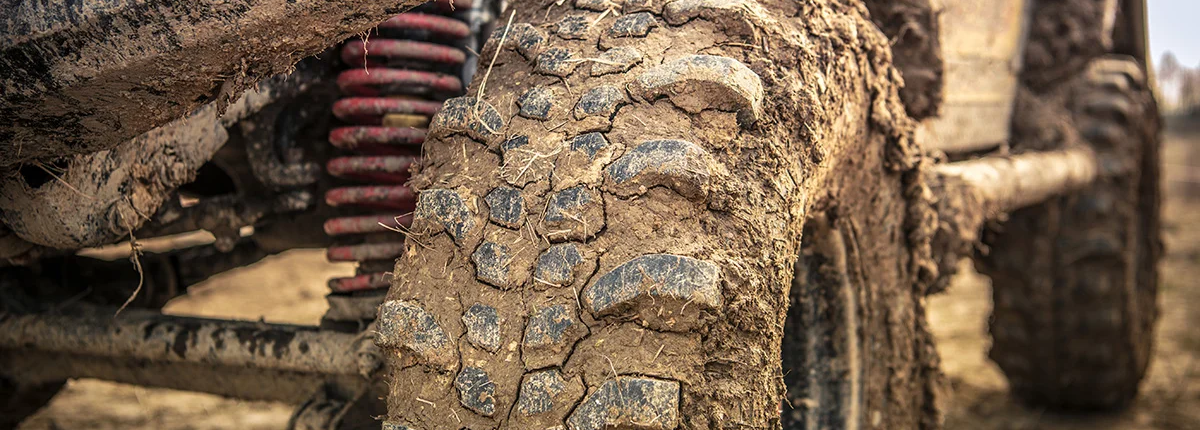ATV tires are not a one-size-fits-all solution. Terrain, weather, and seasonal shifts demand different traction, flexibility, and durability levels. Riders who adapt their tire choice to suit conditions improve safety and performance and extend their equipment’s lifespan.
Riding Through the Seasons
Winter Use
Cold weather riding presents a distinct set of challenges. Standard tires often lose flexibility as temperatures drop, reducing grip and causing poor handling. Winter-rated tires are manufactured with softer rubber compounds that remain pliable in freezing temperatures, allowing them to maintain contact and traction on snow and ice.
Studded tires offer significantly better control for icy trails or frozen logging roads, especially during sudden braking or cornering. The CST Stag, for example, has become a preferred winter option for riders in colder Canadian regions due to its soft compound and reliable all-around performance.
Riders should avoid using mud or hard compound tires during winter unless specifically rated for cold use. Cold-stiffened rubber is not only ineffective but also more susceptible to cracking.
Spring and Fall
Shoulder seasons bring a mix of wet trails, thawing ground, and shifting surfaces. All-terrain tires are ideal during these transitional months. Their balanced tread patterns and moderate ply ratings offer flexibility in diverse environments, from loose gravel to soft soil.
Spring also marks the start of the busiest riding season. Tire supply shortages are common during this period. Ordering in advance and booking installation early can save time and money.
Terrain-Specific Tire Considerations
Mud Riding
Mud tires are engineered for a single job: moving through deep, wet, and sticky terrain. Their aggressive, spaced-out lugs provide grip where other tires would spin out. However, this same aggressive pattern leads to a harsh ride on hard surfaces and rapid wear if used outside their intended environment.
Mud tires are not built for speed or comfort. They are heavy, stiff, and loud. Riders focused on mud performance should also factor in increased fuel consumption and additional stress on axles and suspension.
Sand Dunes and Beaches
Sand-specific tires are lightweight and feature paddle-style rear designs to maximize flotation and forward propulsion. Front sand tires are often smooth or lightly ribbed to help with steering without digging into soft surfaces. These tires are not suitable for rocky or mixed terrain, where their soft construction makes them vulnerable to punctures.
Mixed Terrain and Utility Use
All-purpose or all-terrain tires are the most practical option for riders who traverse logging roads, backcountry trails, and uneven farmland. They offer a balance of durability, comfort, and traction. Well-known models like the Maxxis Bighorn 2.0 provide a compromise between grip and ride quality, suitable for everything from trail exploration to light work duties.
Changing Tires with the Season
While changing tires between every terrain shift is unrealistic for most riders, rotating seasonally, once for winter and once for the rest of the year, is manageable and worthwhile. This approach preserves specialized tires and reduces wear on your general-use set.
Remember that riding with inappropriate tires for the terrain reduces performance, accelerates wear, and increases the risk of failure. Tires should not be treated as afterthoughts. They are a functional investment that protects both the machine and the rider.




